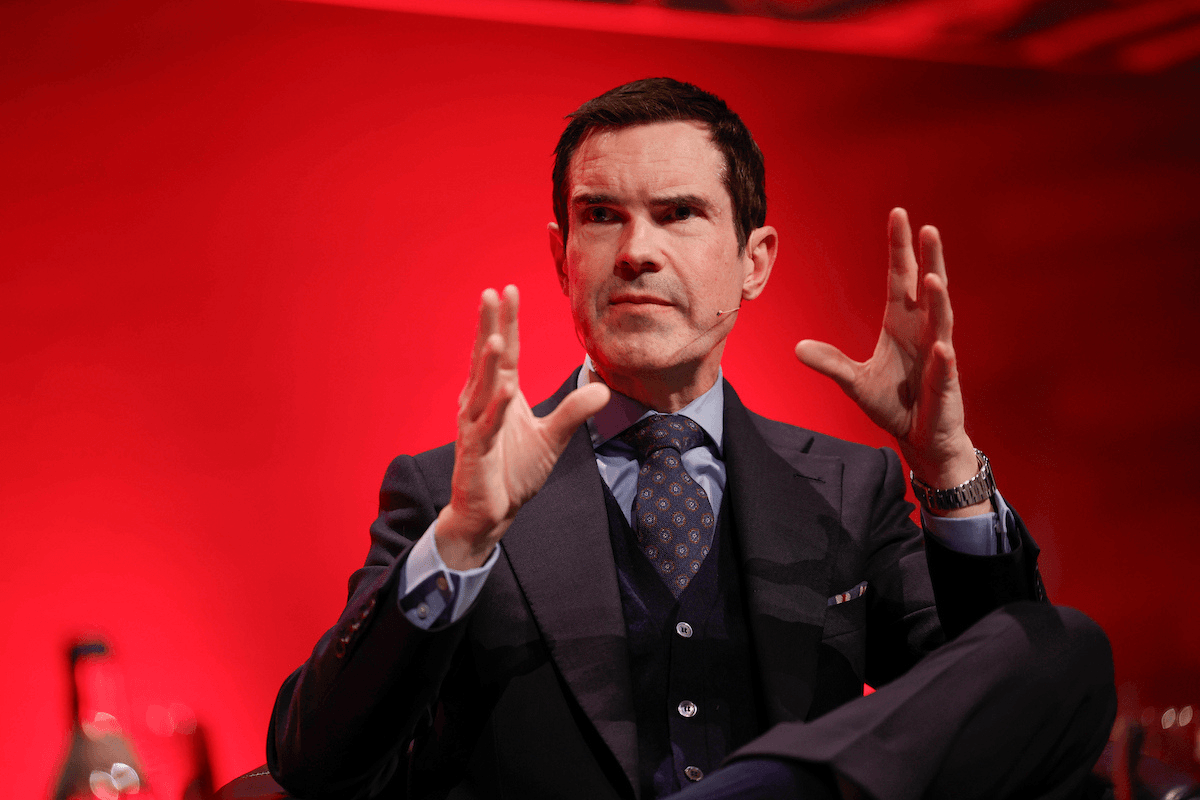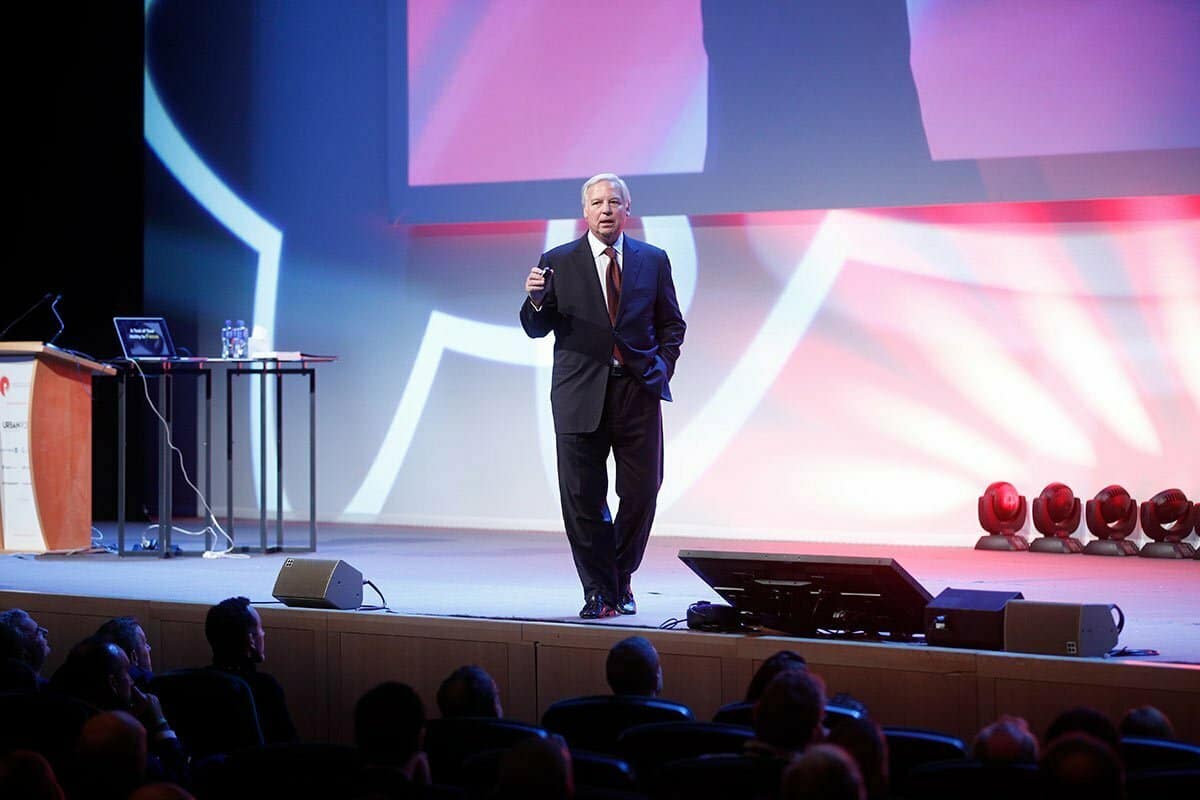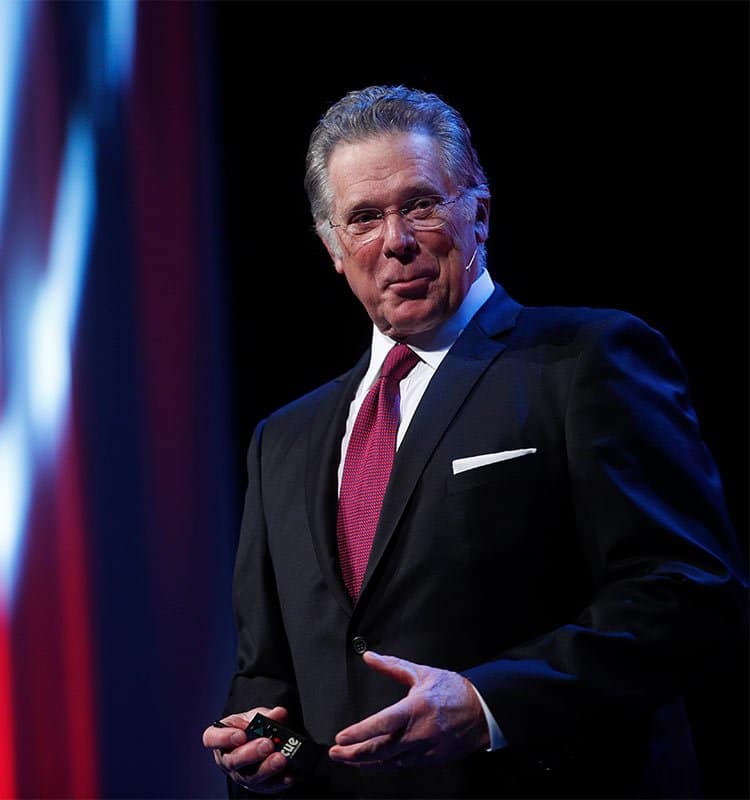Welcome to Pendulum’s pre-event amplify sessions – a series of videos, articles, tools and strategies to prepare you for the world-class speakers and accelerated growth at Pendulum Resurgence on November 27th.
The theme for this session is Opportunities In Uncertainty. Managing uncertainty has always been part of the executive remit. But rarely have leaders been forced to tackle volatility in so many areas all at once.
The recent crisis has underscored just how interconnected people, markets, and events have become. As the novelist Nadeem Aslam wrote, “Pull a thread here and you’ll find it’s attached to the rest of the world.” In an interlocked global economy, triggering events can quickly set off a chain reaction. It has showed just how connected we all are in business.
Pendulum Resurgence is going to supercharge yourself and your team so you are able to take advantage of these oppotunities in uncertainty. Get ready to transform your life!
Check out the videos, articles and downloads below.
Find An Accountability Partner With Keith Cunningham
What To Do When You Are Stuck With Bob Proctor
More Inspiration From Past Pendulum Speakers
Building Your Uncertainty Advantage
Managing uncertainty has always been part of the executive remit. But rarely have leaders been forced to tackle volatility in so many areas all at once. The COVID-19 crisis has underscored just how interconnected people, markets, and events have become. As the novelist Nadeem Aslam wrote, “Pull a thread here and you’ll find it’s attached to the rest of the world.”
In an interlocked global economy, triggering events can quickly set off a chain reaction. Before April 2020, for example, few would have predicted that the price of a barrel of oil would fall below zero. But as the pandemic forced communities around the world into lockdown, the cessation of air and road travel lit a match to kindling that was ready to burn, with a growing oil glut, simmering tensions among the world’s major producers, and the ever-present desire of commodity traders to be made whole from a deal. As the expiry date for May’s crude contracts loomed, investors had to pay buyers to take the oil off their hands, an upside-down arrangement that sent prices cratering.
One might argue that such scenarios are exceptional. Yet even before the pandemic, businesses faced a growing number of potential destabilizers—whether in the form of a digital challenger with a better and cheaper way of serving a core market, an extreme weather event, a massive data breach, or a table-turning change in trade policy. These and other destabilizers aren’t going away. As value chains become more intertwined and networks more global, an ill-timed spark could send finely crafted forecasts up in flames.
BCG’s research has found that some organizations are much better than others at managing this degree of uncertainty. A few even thrive on it. They find opportunities in places where others aren’t looking and shore up their organizations so they can anticipate volatility earlier and spring back faster. These companies have what we call “uncertainty advantage.” With the right data, processes, commitment, and mindset, others can build this advantage into their organizations, too.
YOU CAN’T SEE THE GALAXY WITH A MICROSCOPE
Nearly all businesses do multivariate modeling. Nearly all have protocols to tamp down risk and anticipate exposures, and nearly all have business continuity plans to provide operational resiliency. Yet the reality is that many organizations aren’t approaching these activities in the right ways. They’re focusing too much on the near term and relying too heavily on familiar patterns at the expense of counterintuitive ones.
During the COVID-19 crisis, for example, many leadership teams acted decisively to preserve liquidity, bolster revenues, and adapt working arrangements. But these were mainly short-term actions in the traditional crisis response playbook. With forecasts in flux, the priority for most leaders was getting through the next few months and quarters. Few businesses had the stomach to consider bolder course corrections or look for silver linings in the downturn that could position their businesses for greater long-term success.
The reason for this, we believe, is that most companies haven’t built the capabilities to manage, much less thrive, amidst uncertainty. They lack the robust sensing skills needed to reveal value-creating or value-destroying trends. They don’t have processes in place to evaluate and prioritize multiple strategic options and exploit them in creative ways. And they haven’t adequately prepared their organizations to anticipate and respond to upheaval.
The need for these capabilities isn’t new, but the long bull market over the past decade provided a cushion, allowing companies to fall back on conventional modeling and strategic planning rather than modernizing their approaches. The COVID-19 crisis means that companies now have a lot of catching up to do and a smaller window in which to master the learning curve. But an uncertain future is no excuse not to prepare.
The good news is that companies don’t need to reinvent themselves to gain uncertainty advantage. They just need to become better at detecting signals, more decisive in acting on them, and more proactive in building practices that foster resilience.
SIGNAL ADVANTAGE
Leaders know that betting on new technologies, products, markets, and skill sets is crucial, but the wrong choices can have punishing consequences. Out of a desire to avoid undue risk, businesses can get locked into a cycle of analysis paralysis, delaying key decisions until they acquire information that they feel they can trust. Yet a small cadre of organizations with superior sensing capabilities have been able to move forward with greater confidence. They have developed a more expansive view of potential risks and opportunities and a more nimble way of interpreting inputs. They have cultivated “signal advantage.”
Businesses with signal advantage take a wide-angle approach to data collection, gathering information under a range of headers, from macro topics like the economy, the environment, and geopolitics to business-specific areas such as customer, market, and technological trends. Instead of tracking 5 or 6 variables, for example, as many organizations do, they track 70 or 100. Advanced modeling tools allow them to interpolate this data, develop early-warning systems, and draw patterns out across different time horizons to see how impacts grow, weaken, or mutate.
For these companies, trend analysis is not only about gathering signals, it’s about probing the fact base and asking questions like “How might these trends combine in surprising ways?” and “What actions would a disruptor take in this situation?” Google cofounder Larry Page, for example, is famous for challenging engineers to think about what could be true, even if unlikely, and to imagine opportunities that conventional wisdom would say are impossible.
Strong deductive capabilities allow companies to go deep, applying insights from a single source across the enterprise. And strong inductive capabilities allow them to go wide and ask, “What might this outlying piece of data foreshadow?” For example, an agricultural insurer created a business that is now worth upwards of €100 million per year by using high-altitude imagery to assess grassland production and model feedstock harvests. This signal intelligence improved the company’s underwriting processes and helped it create a novel pasture insurance product, filling an unmet need for livestock farmers.
DECISIVENESS ADVANTAGE
No analytics, no matter how robust, can precisely predict the future. But businesses with uncertainty advantage don’t require precision to act. Instead, they look for chinks in the chain in the form of strategic openings and unexploited opportunities. Using simulations, war gaming, and trend forecasts, teams develop strategic choices under a variety of plausible futures and pressure test strategies against a diverse set of outcomes. Individuals are encouraged to develop not only out-of-the-box ideas, including new business models, products, and services, but also the conditions for success—for instance, external coalitions, joint ventures, lobbying, and other factors that could help nudge the desired scenarios into reality.
These exercises can take the form of workshops for big, “change the organization” initiatives. But many successful scenario-building efforts involve little more than a few hours with sticky notes or a whiteboard. The key is encouraging an open-minded examination, making brainstorming a regular practice, and keeping it grounded in a clear set of objectives. The analysis should consider the business case for each scenario holistically, factoring in financial requirements, projected returns, legal and regulatory complexity, market acceptance, and technical feasibility. Establishing the right practices and rewarding employees for their contributions are also crucial. These steps build organizational learning and inculcate a “what if” mindset that conditions teams to consider innovative alternatives as part of business as usual.
Rich sensing capabilities and a methodical visioning process enable organizations to pursue ambitious plays. Consider Toyota, which in 1993 made a big gamble. It anticipated that fossil fuel prices would rise in the years ahead and that fuel-efficient cars would be the next trend. Company leaders reviewed their strategic options. One of the boldest was to develop a vehicle that could run on green technology and be mass produced. The company set an aggressive target, committing to launch, by 1997, not only the first commercially viable automobile with a hybrid-electric engine but also one that would improve fuel efficiency by 100% over the average vehicle. The project’s leader marshaled 1,000 engineers to work on the initiative, ultimately unveiling the car two months ahead of schedule. Today, Toyota is the top seller of hybrid cars and Prius is a household name.
RESILIENCE ADVANTAGE
Uncertainty advantage also requires the ability to bounce back from the direct and indirect impact of negative events. Companies that have cultivated this ability are able to triage system shocks and regain operational stability quickly, without throwing the organization into chaos. To acquire this “resilience advantage,” leaders look at the evolving business and macroeconomic landscape and consider what demands it might place on their organization, what capabilities they might need, and what no-regret moves and contingency plans to make.
A decade ago, the leaders of a rail company wondered how to make their business more resilient in the aftermath of the global financial crisis. They laid out a range of scenarios, including one that explored the consequences of the European Union’s hypothetical dissolution. Brexit still lay in the future, but the Eurozone was convulsed by the sovereign debt crisis, and squabbles over austerity measures had intensified national divisions. As part of their strategic-planning exercises, the company’s leaders gamed out what would happen if the EU broke up. Where should they situate their business? How would they access needed parts and materials? Then they imagined what a winning business would do to prepare for such a shift. As a result, even before the UK referendum on Brexit, the company was launched down a new path. It had established a footprint in neighboring Ireland, created new freight routes, and reduced its reliance on the single market. Having played with the idea of what it might do in a similar situation—as well as in other scenarios—the company was able to be more proactive and expansive when planning for an event like Brexit.
Businesses with resilience advantage cultivate options, agility, and attentiveness, which allow them to devise multiple ways to reach their goals. They consider the resources they will need and begin laying the groundwork to acquire them. They also prepare their workforce. Harvesting lessons from previous crises, they establish emergency protocols for business continuity and disaster recovery and run preparedness drills that give employees a playbook to use. Thinking ahead gives the organization dexterity when a negative event occurs, removing confusion and reducing the risk of error.
A leading technology device manufacturer knew it had to take preemptive action when modeling revealed risks to its supply chain. For a business that shipped an average of 1.7 computers and one printer per second, even a day’s delay in acquiring needed parts could have widespread ripple effects, slowing production, creating distribution bottlenecks, and disgruntling customers. To get the advance warning it needed, the company created a visualization tool that pulled in weather data, pollution data (which might force a supplier’s plant to temporarily shut down), trade forecasts, and other information. When a risk event tripped a predefined trigger, the system sent managers an automatic alert. The managers had been trained on the new protocol and were empowered to activate the prescribed business continuity plan, be it using a backup parts supplier, a different logistics provider, or some other option. Despite destabilizing events such as flooding in Jakarta, an earthquake in Asia, and a port strike in the US, the business met its fulfillment commitments. The changes reduced risk detection and response times from 28 hours to just 1 hour, a 96% improvement.
LEADING THROUGH UNCERTAINTY
The less stable a situation, the more important it is for senior leadership to play a hands-on role. For example, early in the pandemic, when there were fewer than 20,000 confirmed cases of COVID-19 in the US, CEO Jeff Bezos sent Amazon’s staff a memo announcing that he was assuming a direct role in managing the company’s response to the crisis: “My own time and thinking is now wholly focused on COVID-19 and on how Amazon can best play its role.” The memo telegraphed the company’s commitment and ambition and let everyone know that the response to the crisis would be anything but business as usual.
Active leadership is crucial during times of uncertainty. Top managers must demonstrate through board resolutions, CEO speeches, purpose statements, and other means that they believe in the new initiatives. Likewise, they must be willing to invest resources in terms of capital, people, and time. In addition to setting the strategic course, leaders need to build adaptability into their organizations, encourage a focus on the unexpected, and make it acceptable for teams to challenge assumptions and identify new pathways to growth.
Finally, they need to make their findings available and actionable. Using projections and scenario analysis, leaders can communicate new business practices, engage with stakeholders, disclose related risks and opportunities, and successfully communicate their plans to the market.
GETTING STARTED
Uncertainty is uncomfortable. Going boldly into the future comes with anxiety. Rather than seeking to eradicate uncertainty, top-performing organizations create the conditions for living with it successfully. Change won’t always happen overnight, but it doesn’t have to.
BCG’s research has found that the companies that performed best over the past decade experienced just as much turbulence as their peers, with shareholder returns dropping by 27% on average. But these businesses turned uncertainty into advantage by scanning the landscape, orienting themselves to new circumstances, deciding how to respond, and acting quickly. With experience and expertise, their uncertainty advantage grew and their tempo accelerated. The 25 companies in the S&P Global 1200 Index with the strongest TSR over the last decade recovered faster from the 2008 crisis and rebounded higher, ending the decade with EBITDA margins that were more than five times higher than those of their peers.
These companies proved that crisis can spark transformation. Other companies can do the same. For leaders interested in building uncertainty advantage, we offer these starting suggestions:
- Make a list of five commonly held assumptions about the business and imagine that each one has been shattered. Consider what might trigger these events, how the company should position itself in light of them, and the investments, divestments, and partnerships it should make. Thought exercises like these can lead to breakthroughs. It’s how Southwest created the first low-cost airline. Its leaders imagined a scenario in which there were no travel agents, no assigned seats, and only one type of plane, among other shifts. Then they worked to create that future.
- Find the shortest path to launch. Take a counterintuitive idea with high potential and chart what it would take to become reality in your organization. Where are the rough patches? Innovative companies are zealous about removing these points of friction. They design processes that allow them to go from ideation to action quickly. They integrate sensing capabilities into day-to-day decision making, deploy scenario-building and war-gaming tools in direction setting, and put the right tools and resources within easy reach of project teams.
- Empower employees to challenge the status quo. Questioning existing norms and ways of working can feel like a high-risk, low-reward proposition for many employees. To elicit the best inputs, leaders need to model curiosity, create playful workspaces, and forge an active learning organization that celebrates and rewards experimentation.
Most of all, stop moving uncertainty advantage to the side of the desk. Imagining the future will always seem less important than dealing with today. Periods of crisis only exacerbate the tendency to retrench. By tracking signals, visualizing what the world might look like three or five years down the line, and imagining what it will take to win that future, organizations can take uncertainty from a scary abstraction to a practice that energizes the workforce and reshapes performance for years to come.
*Adapted from bcg.com
Finding Opportunities in Uncertainty
As the COVID-19 crisis continues, many workers face the threat of unemployment. In addition, trends such as automation are changing the labour market, displacing others from their roles and making it more difficult to find good work.
Based on ethnographic research that followed 18 working adults from Newport, south-east Wales, this report describes the types of support and information that such workers are likely to need to find opportunities in an uncertain labour market.
By understanding the strategies used by people to navigate the job market throughout their careers (a process we term ‘career navigation’) and the challenges they face, our aim is to inform the development of more intelligent, data-driven services and policies that reduce unemployment and a mismatch of skills.
The research demonstrates that:
- Workers struggle to find the information they need to efficiently explore opportunities in the labour market and make decisions about their careers.
- The limited career adaptability resources of workers, particularly a lack of career confidence, often prevent them from being more strategic in their career navigation.
- Workers experience career navigation as costly, risky and demoralising.
These challenges impede the ability of workers to foresee risks to their jobs, and find viable and desirable alternative roles. In an increasingly uncertain labour market, these barriers to effective career navigation will contribute to increased skills mismatch and its resulting negative impacts on productivity and wages.
Lessons learnt
The report presents four key insights to inform the development of services and policies that can help workers more effectively adapt to a changing labour market.
- Multidimensional data about jobs and occupations can help workers make career decisions more efficiently: Government, education providers, employers and job search platforms could improve career navigation by working together to generate, open up and share relevant data about jobs and skills.
- Information, advice and guidance can be targeted by identifying a worker’s approach to career navigation: We identified three approaches to career navigation – ‘opportunistic’, ‘strategic’ and ‘stuck’ – which each require different types of support. To help service providers and policymakers to understand these needs, the report provides personas which represent workers who adopt each approach.
- Workers are more able to navigate an uncertain labour market if they are supported to develop the full range of career adaptability resources: Alongside building their confidence, curiosity, commitment and sense of control, it is also important to prompt career navigation by raising workers’ concerns about the future of their occupation.
- Services for career navigation will be more successful if they simulate the support offered by family and friends: Workers rely on members of their social circle as sources of trustworthy, tailored and discreet careers support and advice. Providers of formal tools and guidance should aim to simulate these qualities.
*Adapted from nesta.com
Three ways you can turn uncertainty into opportunity
Recent world events have presented serious challenges. Businesses need to move forward, protect critical assets and plan for the long-term.
Two years ago, Brexit shocked the world. The date for the UK’s exit from the EU is approaching fast, yet very little about what follows is certain for business leaders, citizens or governments. Meanwhile, refugee crises have forced millions to flee their homes and have fuelled political tensions in the nations where people have sought safety. The ongoing trade dispute between the US and China has contributed to the International Monetary Fund’s (IMF) decision to downgrade its global growth outlook for the first time since 2016. Many are wondering what the full impact of the trade tensions will be.
While separate issues may feel disconnected, if you’re a global business or even a small successful business seeking to expand internationally, these world events become serious business challenges. Navigating geopolitical uncertainty is no longer limited to crisis response. In our current environment, it should be embedded into the dynamic strategy of any business.
Personally, I’m encouraged to see that 85% of global business leaders who responded to the EY Capital Confidence Barometer survey expect the global economy to improve in the year ahead. But as political events and issues hit the boardroom, businesses need to take steps to move forward, protect critical assets and plan for the long term:
1. Be agile and build resilience
The first step is building an agile organization that can respond to any change. In a world more connected than ever, what happens in one region can have wide-ranging ripple effects. A debt crisis in Europe can cause instability in Latin America. A broken supply chain in the UK can disrupt delivery in the US.
This is why the most successful companies are taking steps to embed flexibility into their strategy, their culture and their operations. They’re working to become more nimble and better equipped to embrace a pivot when necessary or beneficial.
For instance, we’re seeing many companies take a hard look at their portfolios to make sure they have the right strategy in place to navigate a fast-changing, uncertain world. In a recent EY survey, 87% of companies globally plan to divest an asset in the next two years. They’re focusing on their core strengths while unlocking capital to reinvest in their transformation agenda. Organizations doing this will be able to pivot more easily. They will be better positioned for the transformative age to innovate, fund new technological investments and take steps to future-proof their organizations when needed.
2. Prioritize your people
As we take steps to bolster our organizations, it’s important to prioritize our most valuable asset – our people. They too are often facing unprecedented pressures and uncertainties, both economic and personal. Elections, changes in leadership, nationalistic retrenchment and other geopolitical disruptions can threaten industries, economies and basic personal liberties such as the freedom to live or work in certain countries. Whatever affects their families, friends and broader communities affects them.
In response to such developments, we must ensure that our people feel safe, supported and valued at work, no matter what is happening outside an organization’s walls. For instance, when executive orders banned travel for certain individuals in the US in 2017, we supported potentially impacted EY people by creating digital resources, hosting calls to share information and updates, and connecting them one-on-one with professionals in the EY Visa & Immigration sector.
Even when external factors are not so extreme, leaders still need to invest in creating inclusive, supportive cultures in our organizations and in developing our people. When we build cultures like this, people feel a sense of belonging. They know they can bring their whole selves to work, and that empowers them to do their best.
This isn’t just a feel-good initiative. It pays off, literally. Studies have shown that people perform better in environments where they feel a sense of belonging. Performance goes up by as many as 10 points in revenue, according to EY Business Linkage Research; employees are 3.5 times more likely to be innovative; and collaboration improves by 57%, according to the Corporate Leadership Council.
3. Act decisively
We are also living in a time when short-term pressures have grown exponentially. Something as unexpected as a tweet can move markets, or a misstep by a leader can have catastrophic effects on an entire company. Daily headlines bring a range of new developments that seem to require a response.
We need to act decisively as these shifts occur, but we need to do so in a way that looks beyond the short-term moment and bolsters our long-term goals. It no longer makes sense to focus on our long-term strategy just in annual board meetings. Instead, it should be built into how we evaluate every development that arises. We need to ask ourselves: what could this mean for future business, talent, revenue models and transformation opportunities? What does this mean for what our employees might expect, or what our competitors might do? Then we should take swift and decisive action to protect and survive future outcomes.
To facilitate this, we need to make sure we have access to the right insights from a range of credible sources. Many of these sources will be within our organizations, but we can’t stop there. It’s equally important to get insights from third-party experts, because they can help us identify blind spots, challenge assumptions and get a clearer picture of what we might not know. These insights can help us understand and evaluate relevant developments, then make the best decision based on what we know.
*Adapted from ey.com








